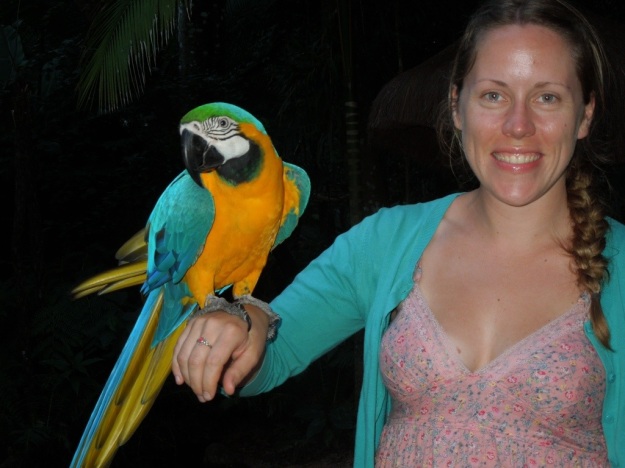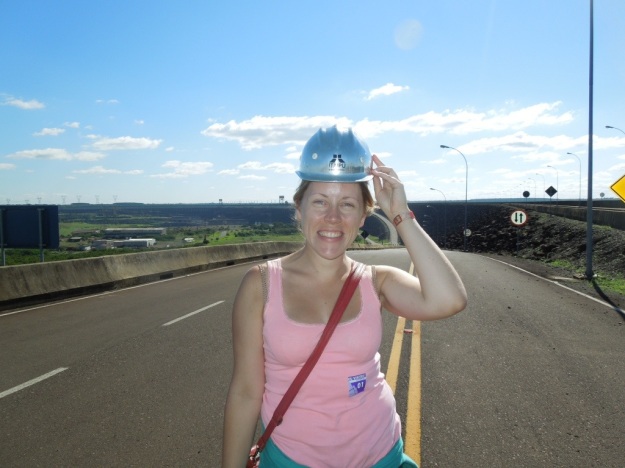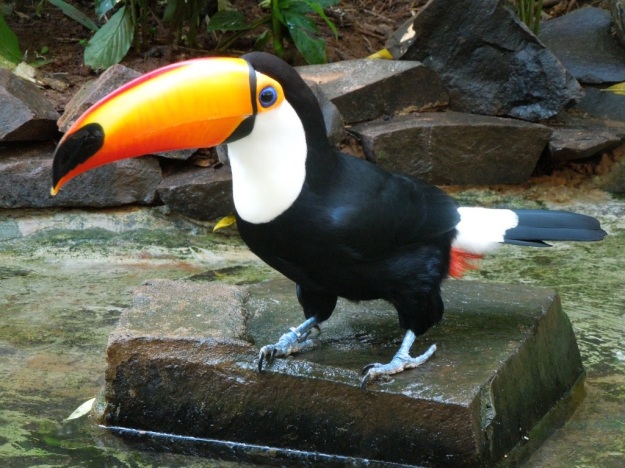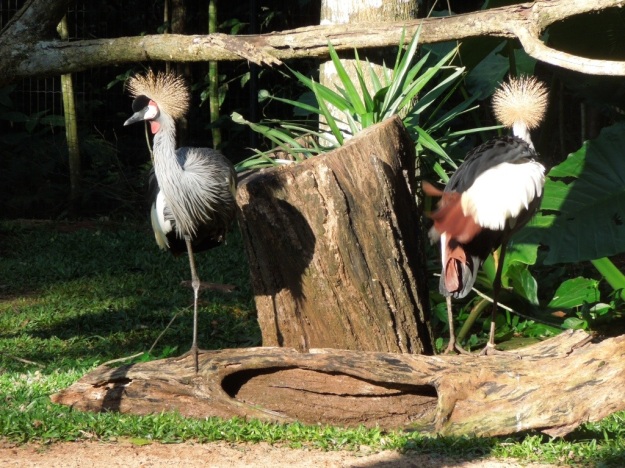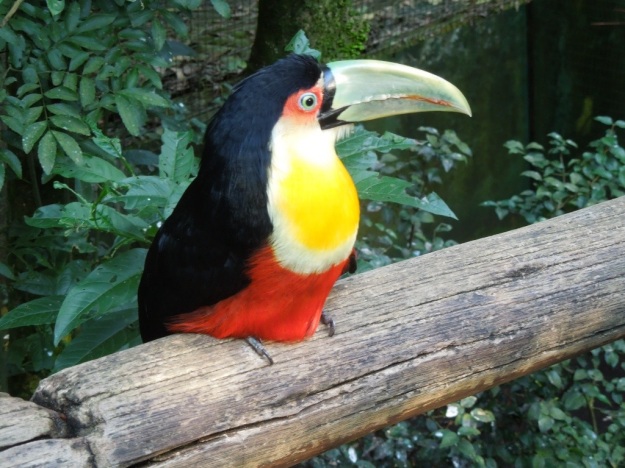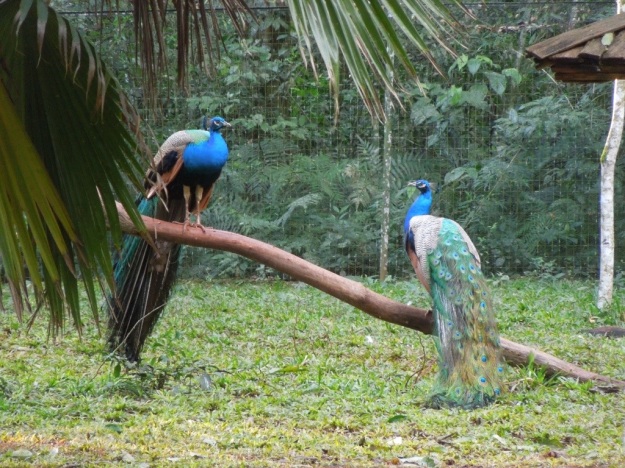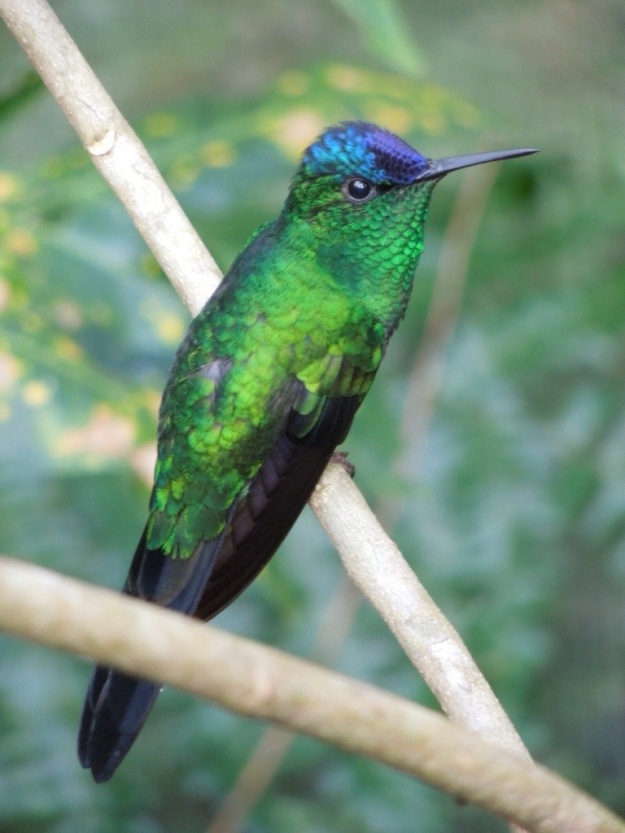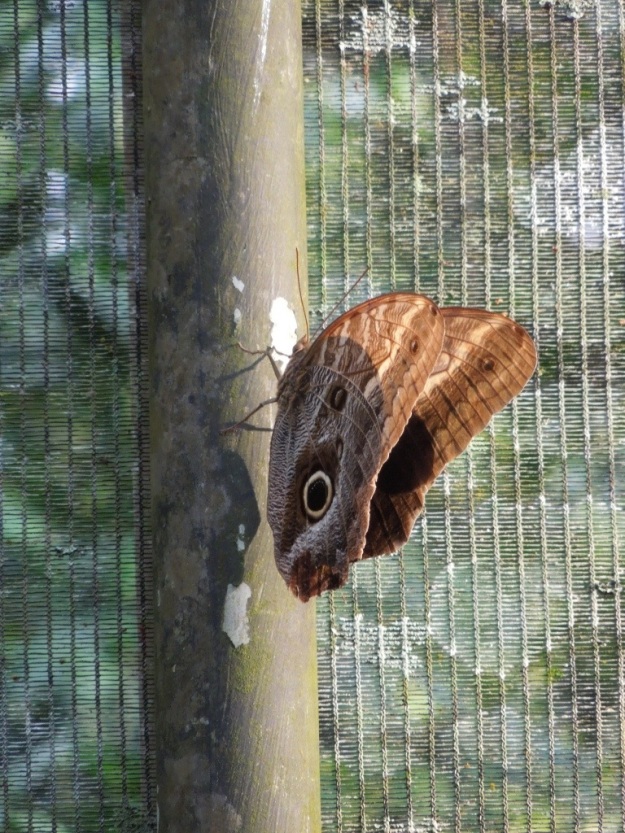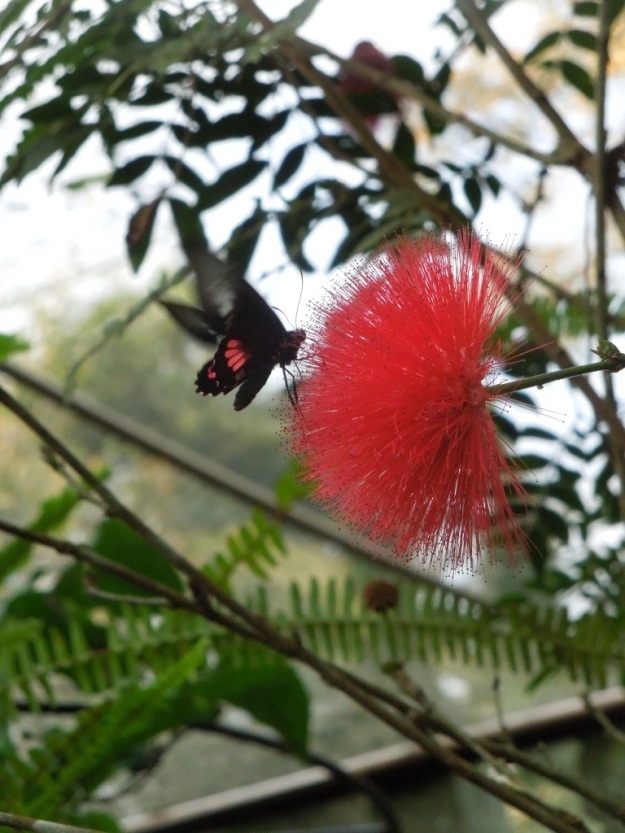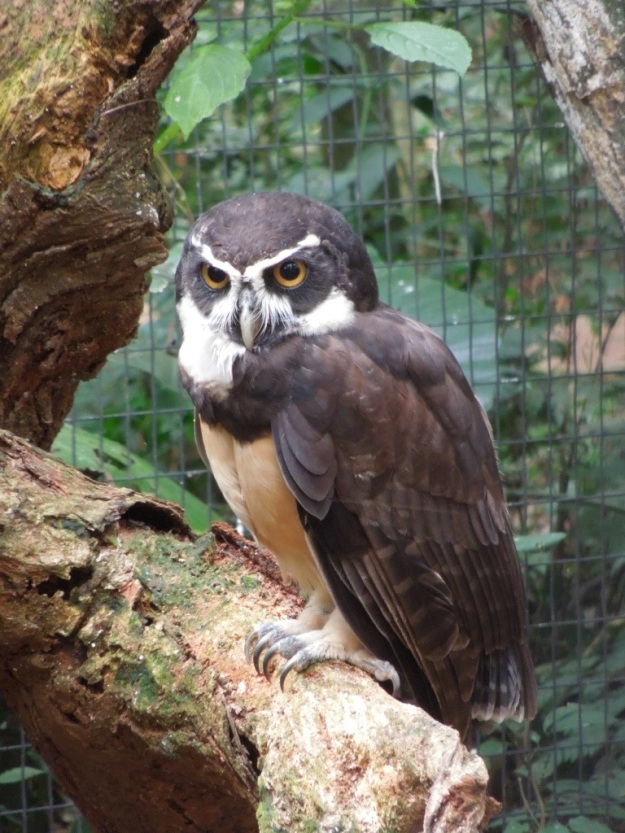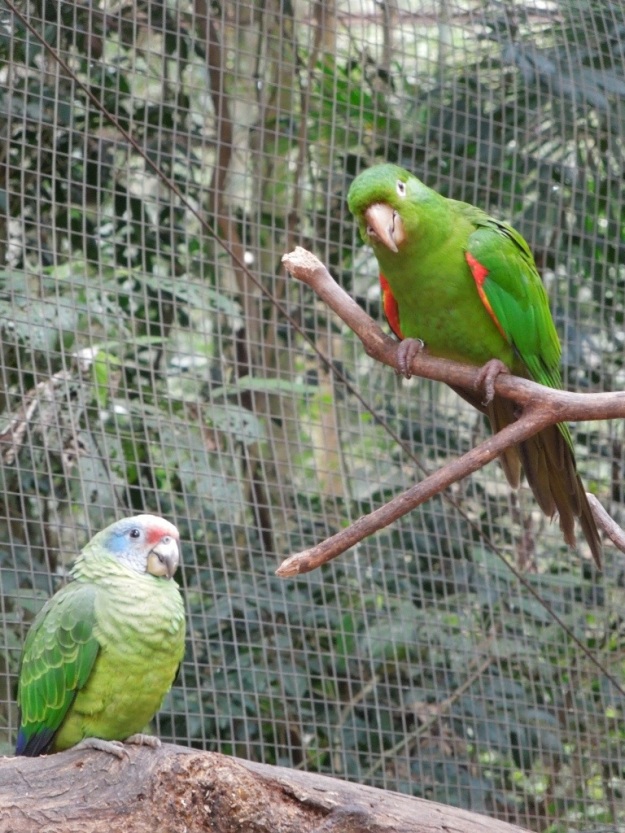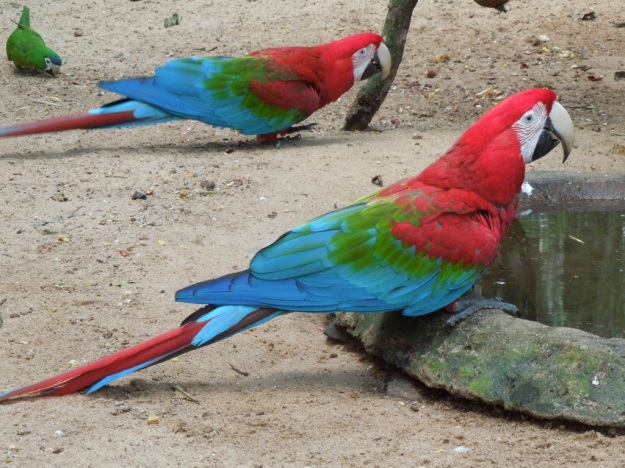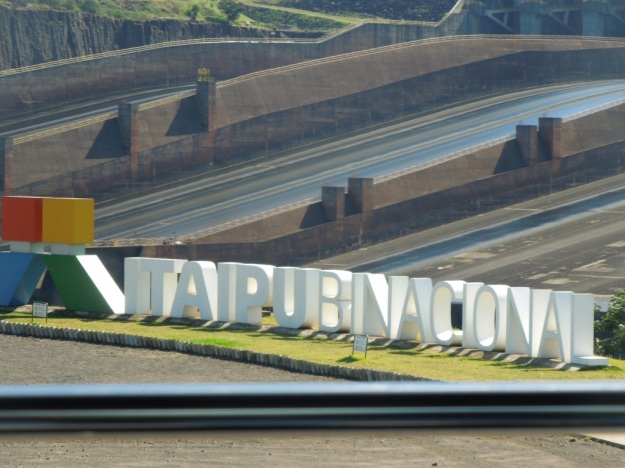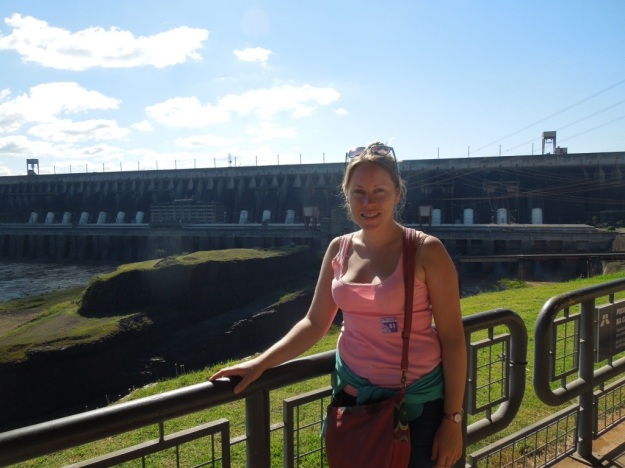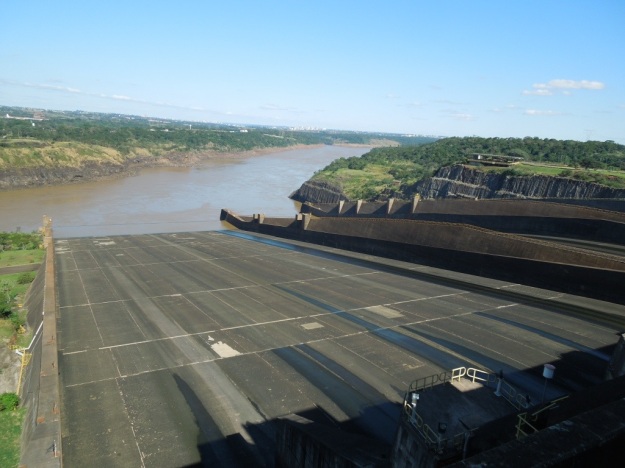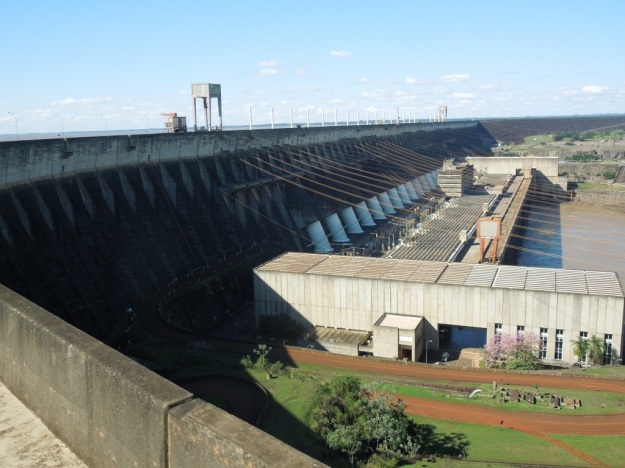The Iguazú Falls are located between Argentina and Brazil. (In fact, at the junction where the Iguazú River merges with the Paraná River, the water forms a natural border between three countries: Argentina’s Puerto Iguazú, Brazil’s Foz do Iguaçu, and Paraguay’s Ciudad del Este.) The name Iguazú means ‘big water’ in the Guarani and Tupi languages, and indeed the falls are the widest in the world, although divided into anything from 150 to 300 individual falls (depending on the season and the amount of water), making the Victoria Falls the widest uninterrupted sheet of water in the world (at high flow).
My first visit to the Falls was on the Argentinian side, where I joined a ‘safari’ tour through the jungle to hear about the Iguazú National Park, another UNESCO World Heritage Site. The area is rich in flora and fauna, though unfortunately for tourists we are unlikely to see many of the species on the paths that we take through just a small part of the 550km2 park. The largest mammals are jaguars, while others include pumas, ocelots, anteaters, coatis; the hundreds of different species of birds include toucans, eagles, and vultures; and insects are even more numerous – it was the first time in my life when I could say that there were ‘too many’ butterflies…
After the jungle tour, we transferred into a boat on the Iguazú River and headed towards the Falls themselves. After a short pause to take photos, the captain took us into and under the waterfalls first on one side then on the other. I wore the rain poncho that I had bought but never used on the Inca Trail, but it was pretty useless – water came up and under, leaving me pretty much soaked through. Any parts of my clothes that were still dry when we got out of the boat were drenched when I went down the walkway for a closer look (and feel). There are walkways on the upper and lower parts of the waterfalls, giving you different views of the different falls from different angles. Unfortunately the walkway of the Garganta del Diablo, the Devil’s Throat, had collapsed when the river flooded in June after an unusual amount of rain and so this was closed for most of the month of July. There was plenty to see, though, and by the end of the day I was out of battery from all the photos I took!
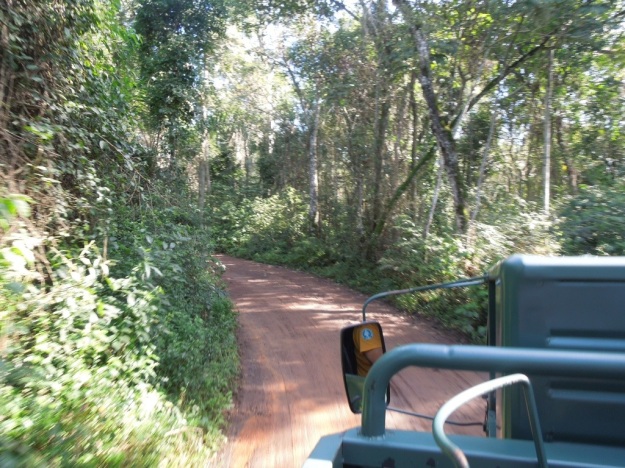 The safari tour through the jungle – I didn’t see a single animal, but we did get a nice introduction to the park
The safari tour through the jungle – I didn’t see a single animal, but we did get a nice introduction to the park
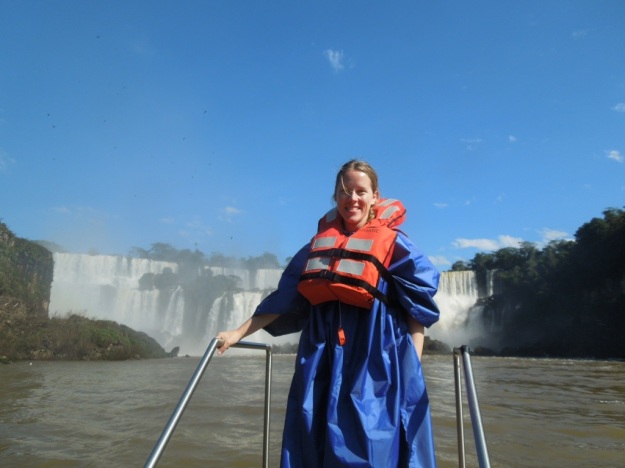 Fully equipped for the boat trip into the waterfalls (we were also given a waterproof sack for our bags and cameras)
Fully equipped for the boat trip into the waterfalls (we were also given a waterproof sack for our bags and cameras)
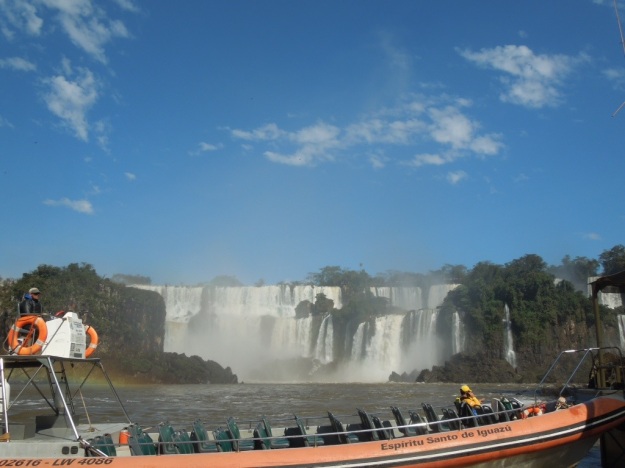 Our ship
Our ship
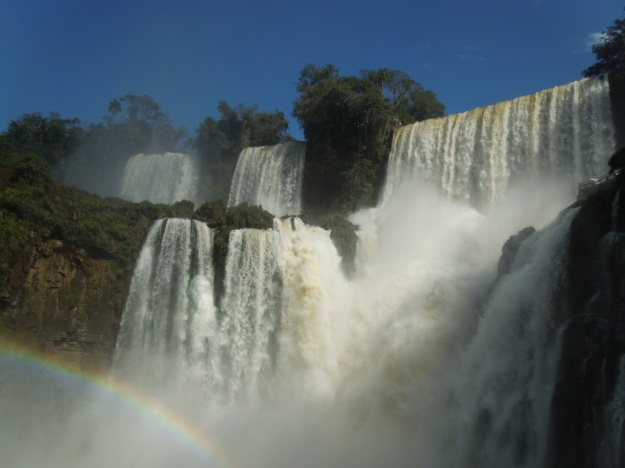 Getting closer
Getting closer
 The rainbow was a highlight
The rainbow was a highlight
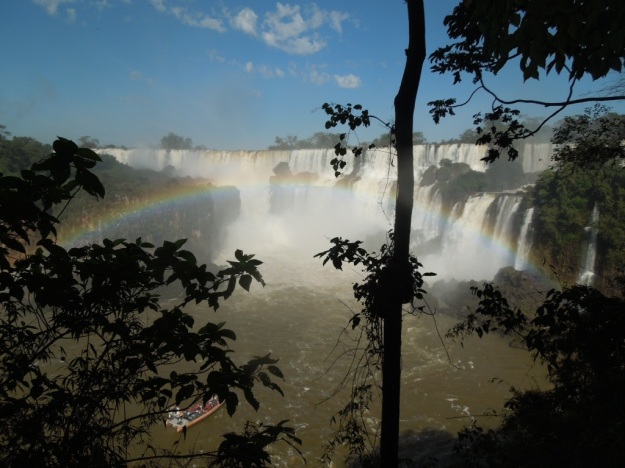 …and it followed me everywhere I went – on the lower walkway
…and it followed me everywhere I went – on the lower walkway
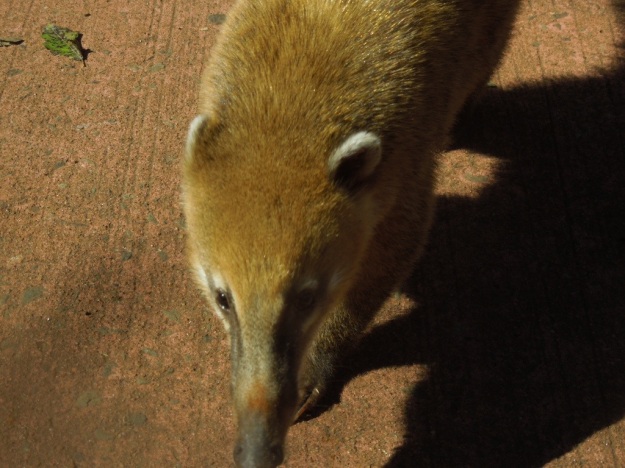 On first-name terms with the coatis
On first-name terms with the coatis
 Looking out from the upper walkway
Looking out from the upper walkway
 One of the many beautiful ‘mariposas’
One of the many beautiful ‘mariposas’
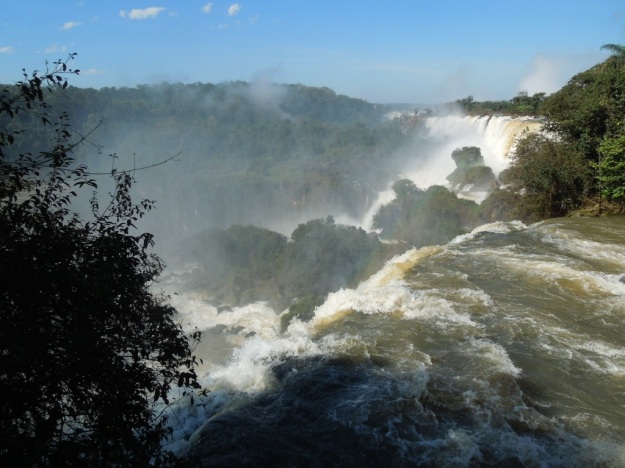 You could walk all the way along the top of the falls on the Argentinian side
You could walk all the way along the top of the falls on the Argentinian side
 A pretty bird (but sadly not a toucan)
A pretty bird (but sadly not a toucan)
 Bye bye Argentinian side!
Bye bye Argentinian side!
The next day on the Brazilian side, I was quite unmoved at first sight. I had already seen the waterfalls from up close in Argentina, and the view from afar was initially not that impressive. As I approached, though, I once again became caught up in the beauty and sheer size of the full panorama that’s visible from this side, while the end of the walkway took me closer and deeper into the water… and I again ended up soaked. (This time, I hadn’t bothered to bring a poncho.)
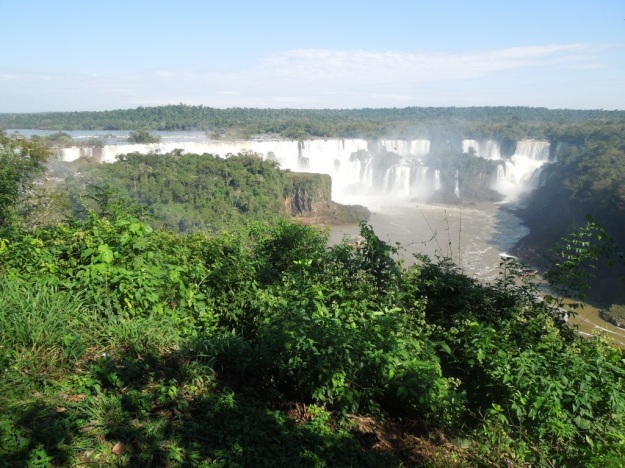 The first glimpse from Brazil
The first glimpse from Brazil
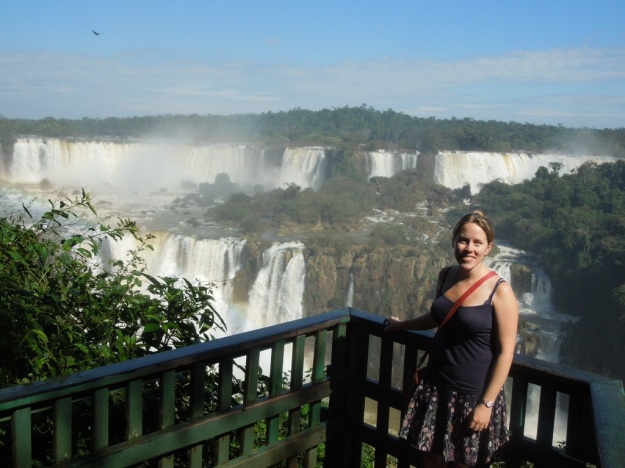 Getting closer
Getting closer
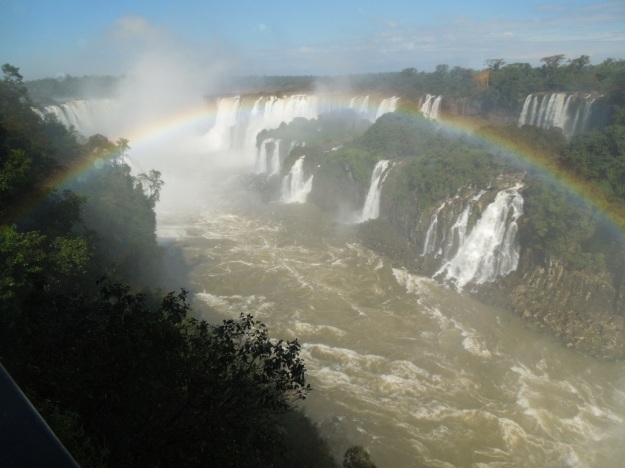 There are rainbows in Brazil too
There are rainbows in Brazil too
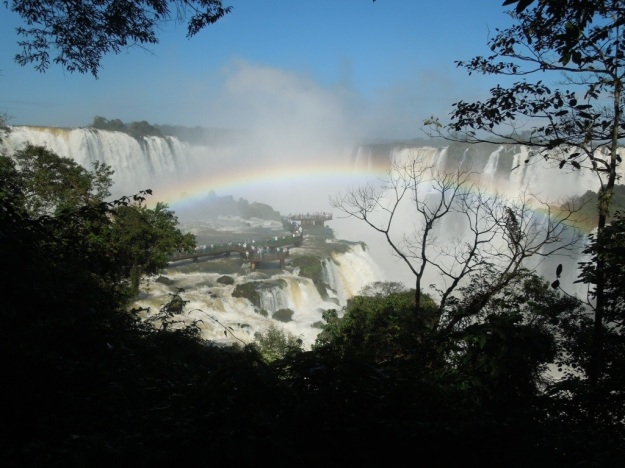 I’ll be down on that walkway soon
I’ll be down on that walkway soon
 …getting a little bit wet
…getting a little bit wet
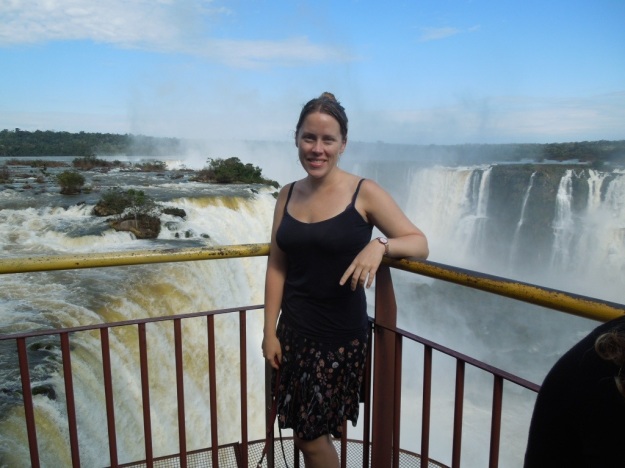 Bird’s eye view again after taking the lift up
Bird’s eye view again after taking the lift up
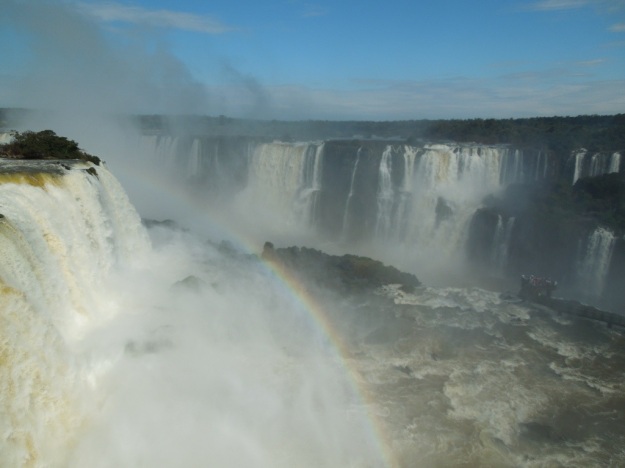 And a final rainbow
And a final rainbow
In the film The Bucket List, Morgan Freeman wants to “witness something majestic”. He had in mind Mount Everest, but I’m pretty sure he would have been satisfied with the Iguazú Falls.
The practical bit
For the Argentinian side:
-There are buses with Rio Uruguay running every 20 minutes between Puerto Iguazú and the Argentinian side of the waterfalls ($60 for a return ticket)
-Entrance is $170 for foreigners
-The Iguazú Jungle company offers the following excursions: (1) Nautical Adventure – motorboat ride that takes you into and under the waterfalls. You get wet! (10mins, $180); (2) Great Adventure – safari ride on land, followed by boat trip down the river, and finishing with the Nautical Adventure (1.5h, $380); (3) Ecological Tour – a relaxing trip in a rowboat down the upper part of the river (30mins, $80). I recommend the first one, unless you’re pregnant, you have back problems, or you’re wearing non-waterproof mascara…
All prices are in Argentine pesos, as of July 2013.
For the Brazilian side:
-There are buses with Cruz del Norte running only every 2 hours between Puerto Iguazú and the Brazilian side, so make sure you check the time ($60 for a return ticket; note that you’ll need your passport, as you’re crossing the border – the bus will wait as you get your stamps)
-If you’re staying in Foz do Iguaçu, there are local buses that take you to the falls in about 45mins for a few reais, and these run regularly
-Everything on the Brazilian side, except the walk along the actual Falls, costs extra – there are boat rides, bicycle tours, hikes, helicopter rides… I didn’t look at these as I’d already done the activities in Argentina
